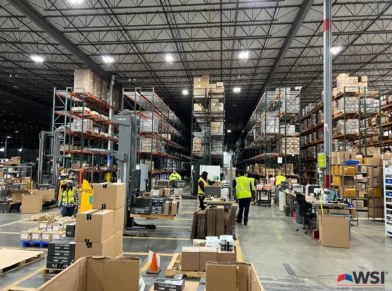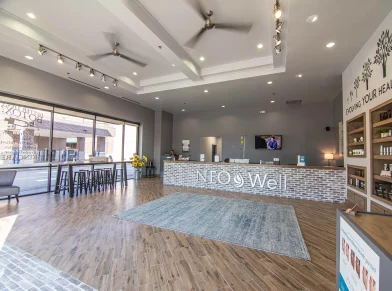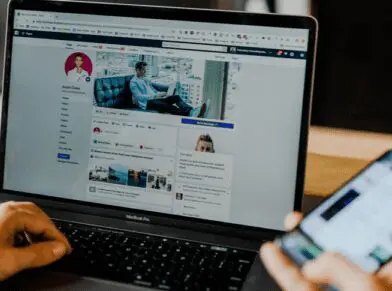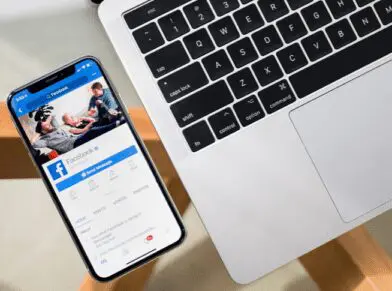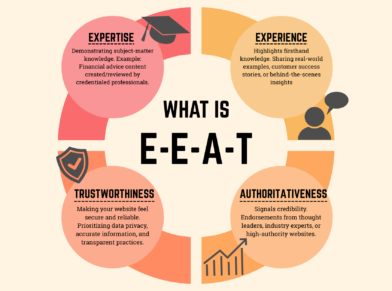WHAT GLOBE RUNNER IS THANKFUL FOR THIS YEAR
It’s Thanksgiving time here in the USA, and this year we thought we would share what we are thankful for this year. Several of our Globe Runner employees thought long and hard–and are offering up what they’re thankful for.
Corey: I’m thankful for my ability to grow and learn this year.
Cindy: Coffee:)
Teresa: I am grateful for my health, family, friends, pets, boyfriend, and having interesting work. Happy Thanksgiving!
Katy: I’m thankful for all our wonderful family members who helped me and Scott to get our first house this year 🙂
Amanda: I am thankful for all that makes me smile… my children, family and friends, our good health, our beloved pets, and my wonderful coworkers!
Alicia: Sleep
Andre: I’m thankful for the friends that invite us over to their house every year.
Erin: I am thankful that I am still allowed to be who I am and live as I choose, and I’m thankful for the people who helped, and help, give me that freedom.
Brian: I’m thankful for my health.
Jenna: coffee 🙂
Allen: I’m thankful for grace. Whether its in code, in a specification or design, in a persons attitude, or in problem solving… When i see grace in action… Im always thankful for it. Its like seeing a shooting star, or rainbow in the dark… Grace narrowly inched out serendipity for the great thank off 2014.
Jeff: I’m thankful for the Globe Runner team for being great at what they do.
Amy: 2014 has been one of the most profound years of my young life. Over the least 12 months I saw parts of the world I never thought I would, explored parts of the world I never knew I wanted to visit, and returned to parts of the world that I hope to someday call home. I am immensely grateful to work with incredible bosses, coworkers and clients who have not only supported my wanderlust, but made it possible. I am also exceptionally appreciative of my family and friends who have housed me on my travels, and loved me through each step of my journey.
Bill: I’m thankful for my wonderful family, my health, and awesome coworkers!
Claire: I am thankful for my family, friends, and all the opportunities this year has provided me.
Chris: Thankful for my awesome family. But mainly my hot wife.
Anusha: I am thankful for my mom who is working so hard for my marriage.
We would love to hear what you’re thankful for, let us know in the comments below.
MOZILLA AND YAHOO AGREE TO 5 YEAR PARTNERSHIP
Today, Mozilla announced they have a new partnership with Yahoo making Yahoo their new default search engine in Firefox. Yahoo outbid Google to end Mozilla’s ten-year, $280m partnership with them they formally had. What does this mean for Yahoo and Mozilla?
Does Google see the demise of Mozilla and allowed them to be purposely outbid? We all know they have more than enough money to out bid anyone. With many users going almost exclusively mobile and Firefox constantly receiving poor mobile user reviews, does this move give Google leverage to help promote Chrome for mobile and IOS users?
Clearly the big winner in this deal is Yahoo. This will be guaranteed income for them. I would fully expect to see a spike in Yahoo’s share of the searches made market. According to comScore, Google saw a net loss of .01% of the searches made in America during Q3 with Google holding 67.3% of the search market. Yahoo holds 10% with no quarterly change. Numbers for Q4 won’t be available until the end of the year, but with this change going into effect the beginning of December. I would expect some small net gains for Yahoo with even bigger gains for Q1 2015.
One thing I would keep in the back of my mind as a SEO is Yahoo optimization. We all know people who are not computer literate but know enough to know that Internet Explorer is terrible. The first thing they do is install a new browser and feel as if that is enough to protect them. Getting into settings and changing things is out of their safe zone. So they accept the default. This is why I believe there will be a gain in Yahoo searches made.
“WHO RUN THE WORLD? GIRLS!”
Alright, we don’t quite run it.
In fact, despite tangible progress, we arguably have a long way to go before we’ll truly have our equal share. In an online Forbes article on Jill Abramson, the former first female Executive Editor of the New York Times, whose dismissal in May of this year sparked much debate on the treatment and standards set for women in executive positions, Abramson said, “Where are all the girls?”
It’s an ongoing issue in business, “raised until the strides of women in business match the gaits of their male counterparts…they still contribute less than 4% of all public and private business revenues — about the same share as in 1997” (Inverso). The concern was addressed on Fortune.com recently, too: “I oversee the team that puts together the Fortune 40 Under 40 list,” writes Leigh Gallagher. “And for as long as we’ve been doing it, the topic of the number of women on the list—specifically, the lack thereof—has been an issue” (Gallagher). Even when women do make the cut, many of us can’t help but notice they’re still mostly surrounded by men.
It’s sort of the opposite around here; the ladies have quite a large piece of the orange pie.
When I began working here, I was immediately struck by how many women there were in the office. The rest of the team had become so accustomed to it that, when I mentioned my surprise, the general response was a pause, a look around, followed by, “Hm, I guess there are a lot of women here.” Even in the close quarters of a team-oriented environment, with no office or cubicle-like barriers between us at all, there has never, to my knowledge, been any serious battle-of-the-sexes tension.
Since expanding and moving to the new space in Addison, we’ve added a few more men to the team, and so are closer to being equal in number. But, the relevant point for the moment is this:
Not only does Globe Runner and its CEO, in a technologically-heavy business, not shy away from accepting women for any position, but the conflict and sexism commonly associated with men and women working so close together is almost non-existent.
Even I sometimes wonder how in the world this is possible.
Particularly since, on top of that, we are a conglomeration of varying personality types. We are Baby Boomers, Gen X and Gen Y, and Millennials. We are conservative, liberal, and everything in between. We are single, dating, living with a partner, and married. How do we work together efficiently without serious strife (other than the occasional I’m-having-a-bad-day-and-can’t-deal-with-you-now drama)?
It all starts with the boss.
It may seem obvious, but it’s always relevant; the boss sets the standard.
Ours, like many, is more than a CEO. He’s a proud father and husband, an artist, and strives to be a role-model for people with dyslexia and other learning differences. He has a lot to balance in his life and work, and he needs people who work well with others to get things done. He also knows that merely being good at SEO does not a successful team member make; Globe Runner has a culture, and you have to work with and in it.
He’s created a culture that promotes equality by, well, not being sexist, and not hiring sexist people.
You’re not going to catch him making offensive jokes about women being lesser, for example. Actually, he’d be more likely to correct someone by pointing out that there are, in fact, women who can do whatever it is Mr. Funny seems to think they can’t. You’re also not going to hear complaints about him taking the advice of a male employee over a female employee again and again. “Having an idea ignored only to be repeated by a male colleague five minutes later to interest and applause” is a common issue for women in the workforce, and number six on TheGuardian.com’s list of the “10 sexist scenarios that women face at work” (Bates). He is consistent about hearing everyone out, and obviously cares more about the opinion and advice than who’s giving them (given that such a large percentage of his team is female, it would be hard not to).
We are, after all professionals.
Sexism is a nuisance, and not just for the women—or men, to be fair—on the receiving end. It’s distracting; it takes time and energy to be sexist. For example, if you get an answer to a question from a woman, and then immediately ask the same question of a man, only to get the same answer, you’ve just wasted time because you couldn’t accept, for whatever reason, that the woman knew what she was talking about. The resulting frustration is also a distraction, and makes for a tense work environment.
No business needs that.
We have fun at Globe Runner; but we’re a busy, professional group. We have a lot of work to do, and no one has time to deal with time-wasting, annoying sexism. We have to work together to get things accomplished, and not only would sexism get in the way of those working relationships, but the result would be a problem in productivity. Bosses and leaders would have to spend valuable time dealing with complaints, female employees may be less motivated to do their job because they’re not appreciated or respected, and they may quit altogether. And, of course, there is always the possibility of legal action, which is a nightmare for everyone.
Some clients would be bothered not only by the lack of productivity as a result of the tension, but by the sexism itself. These issues bleed into all areas when they’re not dealt with, and others outside the team will eventually see them. If you’re sexist around your team, you’ll eventually let it slip around clients, and that won’t get you anywhere.
We don’t have time for that here, and everyone knows it.
This isn’t Mad Men.
Gone is the martini in the middle of the day while your secretary ran your errands and made your lunch. (Though, maybe we could bring back the martini part for everyone.) But, some of the problematic parts of being a woman in the workforce still remain—Christina Hendricks’s take on them is pretty funny. It often seems that a truly forward-thinking workplace is a rarity. Just take a look at Twitter’s @EverydaySexism and #ShoutingBack.
But, we do our best.
We’re in the business of helping people function well online; it doesn’t get much more contemporary than that. We can’t afford to be stuck in the 50s, or any other noticeably less socially progressive age. This world, and this business, is constantly changing. As a result, client needs, expectations, and, of course, the clients themselves also change. We serve both male and female business owners of various ages and backgrounds, and in all sorts of industries. Our internal setup needs to reflect this progressiveness as well.
I’ve never heard anyone complain about being paid an unfair wage. I’m fairly certain we all agree that our allotted PTO is very generous. We have excellent benefits, including maternity leave.
I could go on, but I think you get my point.
We’re not perfect, and we know it. We’re very aware that things can always be better, in our work, and in our office. But, I wrote this because I’m thrilled; workplaces where female employees are valued and respected just as much as their male coworkers do exist in the world, and we’re running one.
*The opinions in this post are mine; they do not necessarily reflect those of Globe Runner or its team members and/or leaders.
GLOBE RUNNER TO LAUNCH NEW ADDISON ART GALLERY WITH GALLERY 550
Digital agency will double as an art gallery
On November 20th, Globe Runner will celebrate becoming an Addison business resident by launching its corporate social responsibility project, Gallery 550. Among the confirmed attendees at the formal opening is the Mayor of Addison, Todd Meier.
Gallery 550 aims to provide up-and-coming DFW artists with exhibition space via Globe Runner’s walls. The first exhibition at this Addison art gallery will feature works by contemporary painter Winter Rusiloski. Her show will run until February 28th, 2015.
Coming up with Gallery 550 was an idea inspired by Globe Runner CEO Eric McGehearty’s roots as a sculptor and the company’s search to give back to the community.
“We want to be more than just another business; we wanted to contribute to the city’s culture, too,” said Eric.
With Gallery 550, Globe Runner will be the only digital agency in the area to double as an art gallery.
Rusiloski is represented by the Cohn Drennan Contemporary Gallery in Dallas and Artspace 111 in Fort Worth. She is an Associate Professor of Art at Tarrant County College Northwest Campus.

“TRAVERSE” BY WINTER RUSILOSKI, COURTESY OF THE ARTIST AND THE COHN DRENNAN CONTEMPORARY GALLERY IN DALLAS
In January 2015, Gallery 550 will be doing a call for entries for the next exhibit slated in Spring.
For more information about Gallery 550 and Winter Rusiloski’s show, please contact Globe Runner.
WHAT EMPLOYERS SHOULD KNOW ABOUT MILLENNIAL WORKERS [INFOGRAPHIC]
Amy Power, CEO of Power Public Relations, recently shared with the Dallas Morning News her five best tips for managing millennials in the workplace.
These principles were based on the latest stats about millennial workers. We put all these stats together in one infographic for a handy overview.
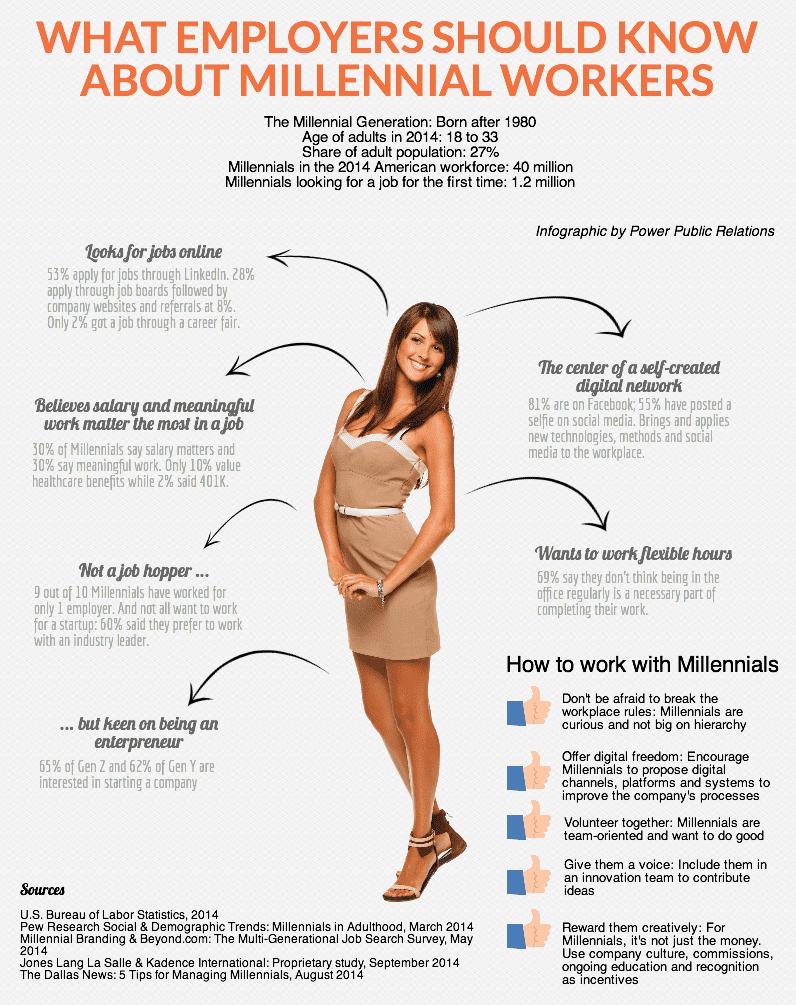
BRANDING: GLOBE RUNNER UPDATES BRAND MARK, CORPORATE IDENTITY
IN a nod to the times and surging demand for SEO services, Globe Runner unveiled its new logo, part of a branding and corporate identity refreshing exercise that started in May 2014. The new brand was produced by upcoming Texan design shop Steadfast Creative.
The rebranding was prompted by unprecedented demand for strategic SEO services, particularly in the booming DFW market. Globe Runner is poised to meet its 2014 revenue targets by the third quarter of the year. The bump in business, which began in March, has forced the agency to seek larger premises. It will be moving to a new office in Addison, Texas in September.
“It was time,” commented Globe Runner CEO Eric McGehearty about the branding exercise. “Our clients are upping their game, and so should we.” The new logo is a clean orange maze forming a G. “It’s a minimalist play on the globe that is part of our name; at the same time it references our agency’s mission of getting to the heart of clients’ online issues,” said McGehearty.
BEFORE AND AFTER: GLOBE RUNNER’S ORIGINAL LOGO HAD A GRADIENT GLOBE AND THE COMPANY NAME WRAPPING AROUND THE SPHERE. STEADFAST CREATIVE RETAINED THE GRAY AND ORANGE COLOR SCHEME, WHILE CREATING A NEW MAZE-LIKE G AS THE ICON.
The agency is slowly rolling out the different elements of the new identity, starting with its website, social media platforms and business cards. All touch points will carry the new branding by the end of 2014.
Globe Runner was started in 2008 by Eric and Heather McGehearty out of Lewisville, Texas. It has over 60 local, national and international clients in North America, the UK, Brazil and Malaysia. Among Globe Runner’s DFW clients are Sylvie Collection, Terry Costa, Jefferson Dental, Coach Posting, Skylane Autohaus, Old World Stoneworks, AgeWait and NICMAXX Online.
Globe Runner employs 20 full- and part-time staff specializing in SEO, pay-per-click (PPC) advertising, content strategy and development, branding, and social media.
The agency’s core competency is SEO, for which it consistently ranks on page 1 of Google for searches relevant to Dallas. Among Globe Runner’s artillery is Senior SEO Strategist Bill Hartzer, a nationally recognized expert on search engine optimization who has practiced, written about and presented on SEO since 1996.
GLOBE RUNNER JOINS SMC DALLAS BOARD OF DIRECTORS
2014-2015 SOCIAL MEDIA CLUB OF DALLAS BOARD OF DIRECTORS WITH GLOBE RUNNER’S JEFF NUNN IN THE CENTER
On May 22, Globe Runner’s head of Business Development Jeff Nunn was welcomed to the Social Media Club of Dallas‘ 2014-2015 Board of Directors. Jeff will be responsible for Treasury.
Jeff is a seasoned sales and marketing professional with extensive experience in segments ranging from interactive marketing to retail. He joined Globe Runner in September 2013.
With Jeff’s new appointment, Globe Runner now sits on the boards of two prestigious organizations in Dallas Fort Worth: the DFW Search Engine Marketing Association and the Social Media Club of Dallas.
LOCAL BUSINESS REVIEWS FOR TRICKY BUSINESSES
What’s a tricky business? It’s a special category of companies that tend to create negative reactions through advertising. How is a funeral home supposed to gain online reviews? Can criminal defense attorneys advertise to criminals? When a B2B company’s customers are spending $20+ million on construction projects, can customers be expected to react the same as those from an ice cream shop? The short answer is no. Tricky businesses require a unique approach. For today, my goal is to only tackle Local business reviews.
Many businesses are simply review magnets and can easily receive hundreds of online reviews in a month. It’s nice to have a product and a service that consumers love, but when a business provides a service that is a necessity, it can be much harder. Google has already taken some steps against tricky businesses. For many, the local carousel isn’t even an option. For others like consulting companies and agencies, the local pack doesn’t even appear in results. Here are several other reasons why it will be difficult, if not impossible to receive reviews for your local business.
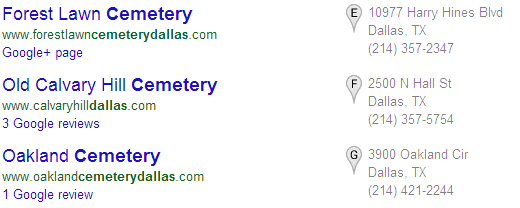
Why Your Customers Won’t Leave a Review Online
- Your customer’s aren’t excited for your product or service, often due to need vs. want (ex: morgue, funeral home, cemetery)
- Your customers are too busy and don’t see the value (B2B businesses that target C suite executives)
- Your customers aren’t internet savvy (ex: nursing homes)
- Your customers want to remain anonymous (ex: criminal defense attorney’s, strip clubs)
- Your customers don’t know you (ex: B2B company working for clients with multiple contractors)
Ice Cream Shops Aren’t Competing with Funeral Homes
Luckily your competition is other local businesses that are just as tricky. Your quantity and length of reviews can be much less than other industries. Receive only a couple of reviews and you should see a direct increase in local rankings. If you do have a competitor in your industry with many reviews, it’s probably a sign of foul play. Read the reviews and look for these signs:
- Were the reviews written all in the same month or in chunks of time?
- Are the reviews overly promotional, too well written or all positive?
- Are the reviews from employees or vendors? In Google, you can click on the name and arrive at someone’s Google + profile.
If you believe a competitor is creating false reviews, you can report it. Most review sites include guidelines on what is a false review. Here are Google’s. A word of caution, report the review at home and use a non-work or non-identifiable email address.
If the reviews are valid, it should give you insight into who is leaving the review, information you can use to increase reviews for your own business.
Step 1: Identify Your Customer Lifecycle
A recent Moz blog on local reviews is worth reading, especially for the customer lifecycle section, which can’t be overlooked. It is critical to analyze when and how you interact with customers, the stages of the relationship, and especially when the customer is happiest.
Take those insights and define when the customer should be encouraged to review. Keep in mind the guidelines for review sites which include: no incentives for leaving a review, no negative reviews for a competitor, no reviews on business premises and a few more.
The idea isn’t to ignore reviews and wait for them to happen, you’re probably doing that now and it isn’t working. The idea is to meet the guidelines of review sites, yet encourage reviews through proactive planning and education within the customer lifecycle.
Step 2: Identify Customer Loyalty
Next, it’s important to call out and define which customers are most loyal. Whether it’s repeat business or a customer who has turned into a loyal friend, chances are you have a small list of customers who would be more than happy to write a honest review if you simply asked them.
Take advantage of these friendly customers first, before putting in place a process for the future. Make sure to space out the reviews, you don’t want a lot to hit your profile all at once, it’s a sign of spam and they could be removed.
Step 3: Identify Which Sites Are a Priority
It’s confusing to ask customers for a review on any site so point them to those that matter most and only recommend 3. Look at the top citations by industry or research your competition. If a restaurant, Urbanspoon should be on your list or for a law firm, Avvo is a good bet. Google and Yelp tend to impact rankings more heavily for every industry, so don’t overlook the big players over those in your niche.
Also, take into careful consideration the experience of the review sites you are asking customers to write a review on. If your customers tend to wish anonymity, don’t encourage reviews on Google +. Or at least explain how customers can create an alias name for a new Google + profile. Google + can be one of the most valuable citations, but often requires the confusing and tedious creation of a new Google + social profile. Use clear, step by step directions on how to leave a review depending on your method of execution.
Step 4: Execute Your Local Review Campaign
Depending on your customer lifecycle and how you interact with customers, execute your review campaign. In person can be effective, especially for those with very difficult online customers. Instead of blatantly asking for a review, consider a survey which can be a printed handout or taken online. Not only will you get direct feedback from customers on many levels of your product or service, but at the end you can ask for a review and maybe even provide an incentive, for completing the survey – not the review. A review is a true indicator of customer satisfaction, and it can allow for a data crunching moment, your net promoter score.
An email campaign can also be effective, but don’t send a one off campaign. Reviews will arrive after constant engagement. Depending on your industry, consider a monthly email newsletter which provides ongoing touch points after a sale and provides value to your customers through editorial content from your blog. In the email, you can periodically send a reminder to leave a review or for those customers who engage most with the email, send a segmented campaign, asking for their honest feedback.
Combine a review strategy with other elements and you will reap multiple benefits including changing one time buyers into loyal, repeat customers.
Step 5: Use Workarounds for Reviews & Improve Local Rankings
If you still struggle with the idea of asking any customer for a review, even indirectly, than some of these suggestions might be helpful…
For a large organization, especially B2B, Foursquare can be your friend. Don’t overlook the power of a large group of employees. Announce an internal Foursquare competition, encouraging check ins between offices. The excitement could even likely carry over to your customers. Either way it adds a ton of social activity and contributes positively to your Local ranking factors. Employment sites such as Glassdoor and Indeed.com also should be a focus for employee reviews, especially if recruiting is a key component to the success of your business.
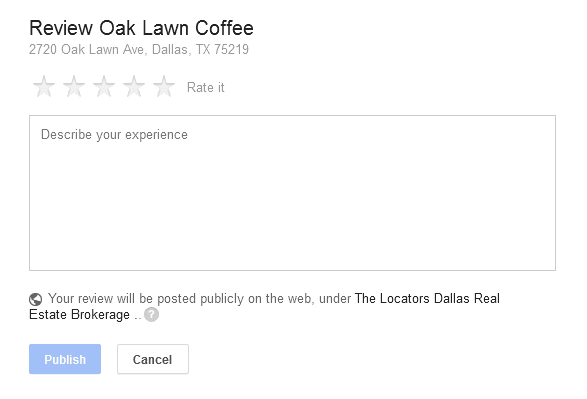
BARNACLE SEO ON GOOGLE +: THIS REAL ESTATE COMPANY IS LEAVING A REVIEW OF THEIR FAVORITE LOCAL COFFEE SHOP, A POPULAR DESTINATION.
For a truly tricky business, review other businesses as your business. This can be done on Google + and many other citation websites. If you have created a Google + Local or Brand Account, login and review vendors, suppliers, friendlies in your industry and more. Just make sure you can actually vouch for their services, remember it’s your company reputation on the line. This is also of great benefit. A business to business review on Google + links to your business Google + account! This could lead to more visibility and hits to your local business review page. It also sends a message to the business to reciprocate and review your company, adding more reviews to your own profile. David Mihm popularized this practice, now seeing a resurgence as barnacle SEO.
Corey Barnett is a Globe Runner Online Marketing Specialist. Follow him on Google Plus.
INTRODUCING A NEW GOOGLE PLUS QUALITY METRIC: VIEWS PER FOLLOWER VPF
Google Plus recently introduced a new public metric on user profiles where they show the total number of post views the user has generated. This, in itself, is an interesting metric, because it shows how active each user is on Google Plus, and how many people have actually viewed posts they have made. But I have decided to take this number one step further, and introduce a brand new quality metric: Views Per Follower (VPF).
Views Per Follower (VPF) should be calculated as follows:
Number of Total Views / Number of Followers
That the number of total views a user has generated, divided by the number of followers the user has. The higher the VPF number, the more “reach” this user has, and, I believe, the higher the quality posts that the user is posting. It could also indicate how “engaged” those followers are, because the more engaged they are the more Google Plus tends to show that users’s posts to followers. Let’s look at some specific examples, using specific users:
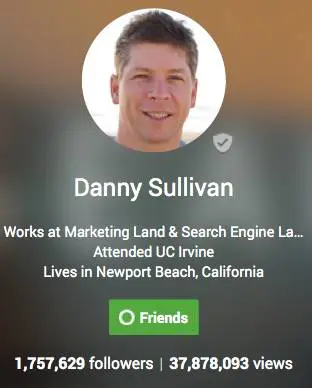
Danny Sullivan (Search Engine Land):
Number of Followers: 1,757,629
Number of Views: 37,878,093
Views Per Follower VPF: 21.5
As you can see, for every follower that Danny Sullivan has, each follower has viewed an average of 21.5 of his posts. Let’s take a look, though, at another public profile, the profile of Sergey Brin from Google:
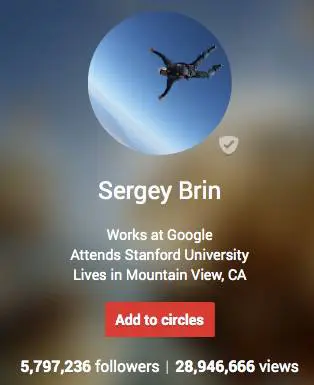
Sergey Brin (Google):
Number of Followers: 5,797,236
Number of Views: 28,946,666
Views Per Follower VPF: 4.99
And, just to be fair, let’s take a look at my personal Google Plus profile, as a comparison. Remember, the higher the VPF number, the better: which means that this user’s followers are more “engaged”, and they view more posts that the user makes.

Bill Hartzer
Number of Followers: 16,139
Number of Views: 9,163,089
Views Per Follower VPF: 567.76
Danny Sullivan’s posts on Google Plus are viewed by more of his followers, but what his numbers show are that there are a lot of followers who do NOT see his posts, and I bet that a lot of those followers aren’t very active on Google Plus. They know they should be following Danny Sullivan because, well, he’s Danny Sullivan. But they’re not very “engaged” with Danny’s posts. But compared to Sergey Brin’s followers, Danny looks really good: Sergey’s followers are really, really not very engaged, are most likely not very active on Google Plus, and just don’t see many of Sergey’s posts.
But let’s take my profile, for example. Sure, I don’t have a million or five million followers on Google Plus. But, if you look at my VPF, you’ll see that my 16,000 followers are highly engaged, active Google Plus users. They see my posts. They engage with my posts enough so that Google Plus shows them more of my posts.
There are a lot of different reasons why your Google Plus’ profile VPF is what it is, but you have to keep in mind that a quality profile on Google Plus isn’t dependent on the number of followers you have. In fact, it’s all about how engaged your users are: and by calculating the VPF for a user’s profile will show how active, how good their posts, are, and, how engaged that users’ followers are on Google Plus.
So, what’s your Views Per Follower VPF? Is yours higher or lower than mine?
Bill Hartzer is Globe Runner’s Senior SEO Strategist. Follow him on Google Plus.
Gideon Rosenblatt has also come up with, essentially, the same type of metric, and there’s an interesting discussion going on over on his Google Plus post.
